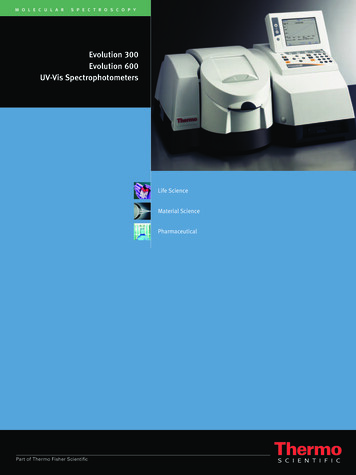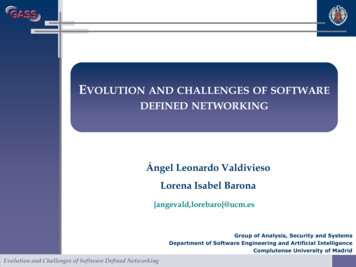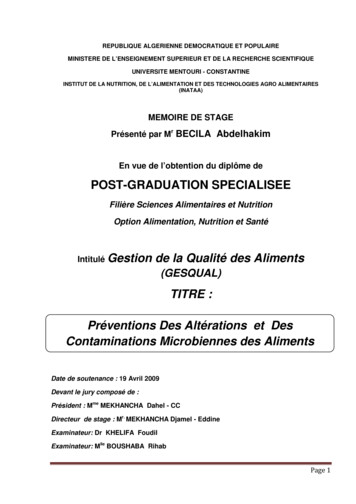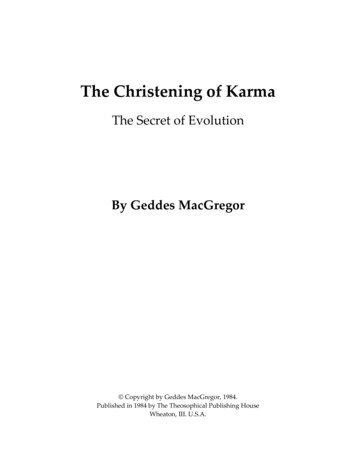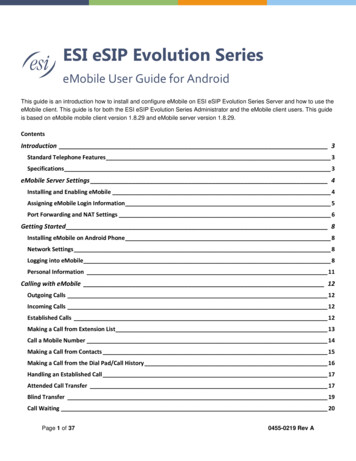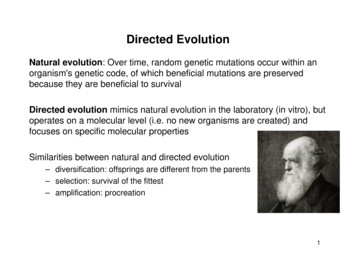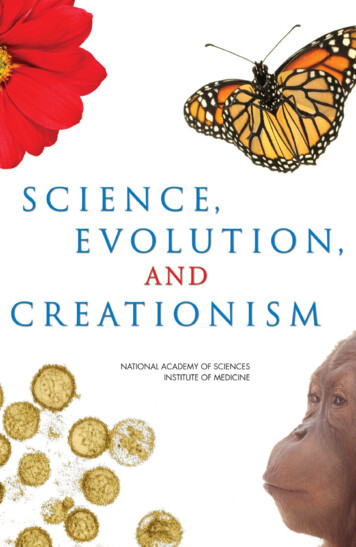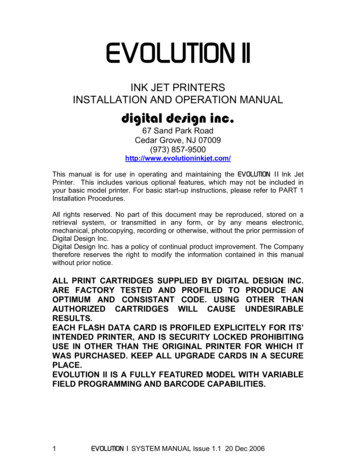
Transcription
RESEARCH ON THE EVOLUTION OF COSTS ASSOCIATED WITH COVID-19 OFA COMPANY FROM THE AUTOMOTIVE INDUSTRYPh.D Student Alexandra Delia BugnariuEmail: alexandra.bugnariu@uab.roUniversitatea „1 Decembrie 1918”Doctoral School of AccountingAlba Iulia, RomaniaPh.D Student Cristina Didea (Castrase)Email: cristina.didea.sdc20@uab.roUniversitatea „1 Decembrie 1918”Doctoral School of AccountingAlba Iulia, RomaniaPh.D Student Ion CozmaEmail: ion.cozma.sdc@uab.roUniversitatea „1 Decembrie 1918”Doctoral School of AccountingAlba Iulia, RomaniaAbstract: The automotive industry is considered to be a remarkable industrialand economic power. Representing one of the most grown economic sectors,it contributes to several important national dimensions by generatinggovernment revenue, creating economic development and supportingresearch & development and innovation. This paper presents aspects of theautomotive industry in the context of COVID-19 pandemic, materializingthrough a study on the evolution of costs related to COVID-19 and forecastingtheir future behaviour in a company from automotive industry.JEL Classification: M21, C10, M40Key words: automotive industry, costs, COVID-191. INTRODUCTIONThe competitive environment, in which companies operate, can be seen as aconstant struggle in which they try to maintain competitiveness in an increasinglydemanding market, encountering obstacles such as uncertainty and lack of information.Therefore, in order to guarantee the profits and obtain the needed information, thecost forecasting and the development of the methods for costs management have becomesome of the most important factors in the industry.The automotive industry, including some other related industries, constitutes amajor booster of economic growth and technological prosperity, supporting the globaleconomy. Consisting of all companies and activities involved in the manufacture ofvehicles, the automotive industry has a diminished historical archive than other industries.41
It has an exceptional interest due to its impact on the history of the 20th century. Althoughthe automobile appeared in Europe at the end of the 19th century, the United Statesdominated the world industry in the first half of the 20th century, with the invention ofmass production. In the second half of the century, the situation changed spontaneously, asWestern European countries and Japan became major suppliers and exporters.The first self-propelled road vehicle was a military tractor designed by engineerNicolas Joseph Cugnot in 1769 using a steam engine to power his vehicle built under hiscommand at the Paris Arsenal. Romania was among the first countries in the world, whichintroduced the car in traffic, since the beginning of its construction. The first steam engineappeared in 1838 at the mining operations in Zlatna and at a timber factory in Bucharest. 1The semiconductor crisis induced by the COVID-19 pandemic was exacerbated bynatural disasters, such as a fire at a major semiconductor plant, severe weather and droughtin Taiwan. The origin of this lack of semiconductors dates back to the beginning of year2020 when Covid-19 caused the shuttering of factories. Once factories closed,semiconductor suppliers redirected parts to other sectors, such as consumer electronics,which have seen a tremendous increase in demand due to working from home and movingeducation in online mode.2.RESEARCH METHODOLOGYThis paper contributes to the knowledge of the evolution of automotive industryduring COVI-19, materialized using a statistical forecasting model based on the associatedcosts with COVID-19 within a company in the automotive industry.The research methods used for the elaboration of this paper are: the review of thespecialized literature, the method of structuring the research, the documentation, theanalysis and the chronological study, the comparison and the case study. We used thesemethods by consulting specialized papers, various articles and publications, databases, aswell as direct documentation that requires knowledge of the practical reality of amultinational company.3. AUTOMOTIVE INDUSTRY IN THE CONTEXT OF COVID-19 PANDEMICThe outbreak of COVID in Wuhan, prompted the World Health Organization todeclare a global health emergency in late January 2020. A catastrophic evolution observedduring the COVID-19 pandemic is the growing number of collaborations. The need toaddress pandemic disorders and public health issues has put companies, governments andnon-governmental organizations in situations that require astonishing interdependence andcoordination. For example, these collaborations have grown exponentially in 2020 toaddress the lack of medical and protective equipment, to facilitate vaccine researchpartnerships, and to systematize the safe reopening of local economies.This pandemic has also had a significant impact on the automotive industry andparts suppliers are still not reaching its maximum production capacity. Subsequent deliverydelays have affected the market on several levels since the delayed launch of new carmodels, broken supply chains and lower vehicle sales in the first half of 2020.The impact of COVID-19 on the automotive sector was swift and significant.Initial concerns about a disruption in exports of Chinese parts quickly turned into large1Biblioteca Națională a României ‐ expoziție virtuală Septembrie 2020 (bibnat.ro)42
scale production disrupttions across Europe. In thhe US, assemmbly plant cllosures have addedto intense pressure on ann increasinglly difficult global supply base.2Acccording to MichaelMWaylland, “the cooronavirus paandemic has increased caar salesand buying a car will neever be the same.sCar deealers and maanufacturers are changinng theirbusiness strrategies and investing inn new digitaal sales tools as consummers demandd moreonline and personalizedpservices”.3COOVID-19 hass triggered social and economic unrest arouund the worrld. Apandemic ofo such magnnitude and severity has noot been seen since the Sppanish flu in 1918.4The globall transformaation of inddustries, suppply chains,, labor, commmunicationns andinstitutionall frameworkks has suggeested the enttering in a periodpof change in whiich thefuture cannot be univerrsalized based on the passt. The impact of the COOVID-19 panndemichas also leed to new opportunitiesos created onn other liness of mobilityy, such as sharedmobility, electric vehiclles, connectivvity solutions, the exchannge market anda vehicle reental.Anaalyzing the globallygprodduction of motormvehiclees in the periiod 2019-20220, wecan observee that in 20020 there waas a producttion in the amountaof 77.77million motorvehicles, whhich is a decrrease of 15.88% comparedd to 2019.Fig.1 Producction of motorr vehicles 20119-2020Source: Ownn processing basedbon Prodduction Statisttics www.oicca.net5The larrgest global vehiclevmannufacturer forr the period analyzed is Chinawith a prodduction of 266 million vehhicles in 2019 and in 20220 with a deecrease of onnly 2%compared too the previouus year. It iss followed inn second plaace by the Unnited States with aproduction volume of abouta11 miillion vehicles in 2019, and in 20200 with 19% fewervehicles prooduced.2Understandding COVID‐199’s impact on the automotive sector Deeloitte GlobalThe coronaavirus pandemmic has upendeed auto sales anda buying a carc will never be the same(cnbc.com)4North, D. (11999). ‘Dealinng with a non--ergodic worldd: Institutionaal economics, property rightts, andthe global ennvironment’. DukeDEnvironmmental Law & Policy Forumm, 10, 1–125Production Statistics wwww.oica.net343
Analyzing from another perspective, namely by groups of states, we can observethat the first place remains occupied by the group of states called Asia - Pacific with aproduction volume of about 49 million vehicles and the second place belongs to Europe,with a production volume of 22 million vehicles in 2019, registering in 2020 a decrease of21.6% compared to the previous year.As we can see, Germany is the largest European producer, followed by Spain,France and Russia. Analyzing the data related with Romania, we can observe a registereddecrease of 10.7% in the production of motor vehicles in 2020 compared to 2019.The countries that recorded the largest negative change in 2020 compared to 2019were Algeria, registering a decrease in motor vehicle production of -98.7%, followed byIndonesia (which had a decrease of -46.3%), Austria (with a decrease of -41.7%) andFrance (which recorded a decrease of -39.5%).In other words, the countries that registered a positive change related to vehicleproduction in 2020 were Kazakhstan, which registered an increase of 51.5% compared tothe reference year; followed by Egypt, which had an increase of 28.4% in motor vehicleproduction in 2020 compared to the previous year 2019.Driven by global initiatives such as the Paris Agreement, several countries aroundthe world have begun to adopt stricter emission controls on the new vehicle prototypes. Assuch, car manufacturers have started to grow their business in the electric mobility sector.4. SEMICONDUCTOR CRISISSubsequently, the COVID-19 pandemic also led to a semiconductor crisis in manyindustries, including the automotive sector. In early 2020, the global semiconductorindustry expected this increase in demand to trigger the launch of 5G on mobile devicesand specialists predicted an increasing demand for the growing need to use semiconductorsbeyond smartphones, such as automotive and industrial applications. With COVID-19, thishas changed, impacting the global semiconductor supply. The initial disruption was seen inChina and Taiwan, dominant semiconductor-producing regions, where factories wereforced to close when the pandemic first struck.However, although production has recovered and semiconductor revenuesincreased in 2020, new increases in demand, such as those caused by changing consumerhabits, along with challenges in allocating semiconductors, have led to a significant andgeneral lack of semiconductors in 2021.The car market and automotive industry were significantly affected by theCOVID-19 pandemic. Decreased vehicle sales and the closure of production plants haveled companies to reduce their semiconductor orders. The fall in vehicle sales and the totalor partial closure of production plants led as well to a reduction in semiconductor orders.This reduction in demand from the automotive sector has induced the consumer electronicssuppliers to quickly seize this opportunity, driven by work from home and online school.There was also a growing demand from telecom providers who needed to meet the needsof online work and entertainment. When demand for new vehicles finally returned,carmakers failed to get enough semiconductors, forcing them to once again obstruct theproduction.Initially focused on the automotive industry, the global shortage of semiconductorshas affected other sectors, such as consumer electronics, home appliances andentertainment electronics. As the demand for electronic devices continued to increase, thepressure on semiconductor manufacturers to meet their supply commitments raised.44
Acccording to OndrejOBurkaacky, “in the first month of 2021, gloobal semiconnductorsales amounnted to moree than 40 billlion , an inccrease of 13%% compared to the same monthin 2020. Inccreased demaand, semiconnductors storrage in due tot geopolitical tensions ssuch asthose betweeen the US and China and extreme weather events,ehave fueled the globalsemiconducctors deficit seensin 2021.”65. CASEE STUDYThe cossts associatedd with COVVID-19 were highlighted separately bby typeof cost elemment, for eaach departmeent. Examples of costs associated withw COVIDD-19 atcompany leevel are: costts with the purchasepof surgicalsmaskks, rapid testt Antigen COOVID19, cardboaard boxes for medical waste,wepidemmiological seervices, medical office oon site,thermometeers, hand sannitizer and forr surfaces, ettc.Currrently, the analizedacommpany is placced in the topp of Romaniaan companiees withthe same obbject of activvity being paart of a grouup of the moost premium car manufaccturersand the worrld's largest vehiclevmanuufacturer.In carryingcout their activityy, managers are often plaaced in a poosition to anticipatethe future, anda then to makemdecisioons accordinggly. In this casecstudy wee aimed to oobservethe evolutioon of COVIDD-19 associaated costs at company leevel and to obtainoa moddel thatoptimally describesdthe evolution off the phenommenon followwed over time and that heelps usto forecast its future behavior,bthee sample beiing made upp of a seriess consisting of 16moments off time.In thet first stepp, the deseaasonalizationn of the seriies and the calculation of themoving aveerages, initiaally we note the indicatorr that we stuudy (expressed in thousaands ofRON), in a series on mooments of timme as followss:Fig. 2 COVID-19Casssociated costtsSoource: Own processingTo assume thee trend of thet previouss series, we insert the line-type diiagramregarding thhe initial 351115211912131436155716Ondrej Burrkacky, Stephaanie Lingemannn, Klaus Potootzky, Copingg with the autoo-semiconducctorshortage: Strrategies for succcess, 2021, TheT semiconduuctor shortagee in autos: Strategies for succcess McKinsey45
Fig. 3 The evolutioon of costs associatedawith COVID-19Soource: Own processingObsserving the graphic above, we can state the increasing trennd for the sstudiedperiod of thhe costs relateed to COVIDD-19.Theen, in order tot eliminate the seasonall component in order to highlighththee trend,the "movingg averages" mustm be calcuulated using the formula: 0,5 y t k y t k 1 . y t . y t k 1 0,5 y t kyt 2kFollowing the calculation,ctthroughthe graphical reppresentation of the new valuesof the movving averagess, (12 momeents) we cann observe thhat we eliminnated the seeasonalcomponent with the helpp of this 475089110111220100Fig. 4 SeasonallySaddjusted valueesSoource: Own processingwwhich seasonal faactors act is highlighteed numericaally byThee intensity withcoefficientss of seasonaality. Thereffore, a calcuulation of thet seasonallity coefficieents isneeded in orderoto correect the forecaasted value basedbon the trend takingg into accounnt theirinfluence. TheyTare calcculated usingg the followinng formula:K ts IseasonalityycoefficienttsCoef.averaggeY ts 100 Y ,80746380,72733310,7970024* 1 influeences by 321,540522351,699255381,16938323571,53503Fig. 5 Seasonalityy coefficienntsSouurce: Own processingp** 1 influuences by increeasing46
Analyzing the above results, we can observe that the phenomenon affects season Iand II by decreasing the costs related to COVID, and season III and IV are influenced bytheir increase (if the average coefficient of seasonality is 100 influences by increase,and in contrary case, by decreasing).The calculation for next step called “establishing the trend and calculating thevariation between the differences, calculating the average, the linear average deviation andthe coefficient of variation for each hypothesis” can be found in the following Deviation1Coeficient 26990,429955Dtymod3136464842506867495681Fig. 6 Results for average, deviation, coefficient of variation calculationSource: Own processing in MicrosoftExcelUsing the MIN function inMicrosoft Excel, we have as a result:Dty 0.219555, which means the case of the hyperbolic tendency and its equation is in theform:For the linearization of the tendency, the substitution can be used 1 k , thereforeT k a bk obtaining:tUsing the formula, obtained by the substitution used for linearizing the trend, wecan calculate points a and b and the result will be: b -22 and a 45.In the case of a chronological series b point defines the direction of phenomenonevolution. Due to this, and because the prediction equation in the case of hyperbola isT a b*1/t; T a b*k it results that we have a decreasing evolution of the phenomenon;therefore, the costs related to COVID 19 evolve decreasing.The next step is called determining the forecast for the following seasons. Tobegin with, we calculate in Microsoft Excel using the AVERAGE function, the average foreach column:473136464842506867495681Dty52110,219555
Fig. 7 Foreecast for the followingfseaasonsSource: Owwn processingg in Microsoft ExcelTreend-based forrecasting is the next stepp that is calcculated usingg: T a b*k or theTREND funnction; first wew calculate k for the fouur seasons foor which we wantw to prediict:d forecastinggFig. 8 Trend-basedSource: Owwn processingg in Microsoft ExcelThee last stepe is called “tthe correctioon of the foorecast by thet coefficieents ofseasonality””. If the deteermination off the trend wasw made on the seasonallly adjusted vvalues,the influencce of the seasson must be reintroducedrd in the modeel, according to the formuula:y p t k K sFig.9 Corrrection of the forecast by thet coefficiennts of seasonnalitySource: Owwn processingg in Microsoft Excel48
The series of time moments, including the corrected forecasts for the next 4seasons, will be as follows:Fig. 9 COVID-19 associated costs including the forecasting for the following 4 monthsSource: Own processingUsing this model developed in Microsoft Excel, we can anticipate for the next 4months, the costs associated with COVID-19 related to the studied company. We canobserve that in November the costs associated COVID-19 will be 20 thousand RON, inDecember will be 35 thousand RON, in January will be 51 thousand RON and in Februarywill be 67 thousand RON.6. CONCLUSION AND LIMITATIONFollowing the analysis of the literature and case study, it was possible to outlinecertain conclusions and limitation presented in the last part of this paper.Worldwide, the automotive industry is a spark for regional development,contributing to several important dimensions by encouraging research and development,revenue generation and boosting economic development.The automotive industry was severely affected by the Covid-19 pandemic andlockdown measures in early 2020 forced factories to close or partially operate at theirnormal capacity. Therefore, demand for cars has fallen and is likely to decline for a longertime, with the subsequent semiconductor crisis encouraging this decline.Cost forecasting allows managers to boost the decision-making process, costmanagement and streamline the budgeting process. Therefore, predictions having a directimpact on company’s effectiveness, constitute the reason why time and resources wereinvested to study and develop new methods of forecasting and cost analysis. Thesepredictions should ensure as much accuracy as possible. Underestimation could result insubsequent cost increases, and overestimation could lead, for example, to the cancellationof the approval of certain projects.Regarding the model used in our case study, using it we can describe the evolutionbased on the tendency of a phenomenon, in time or its connection with other phenomena.The evolution of a phenomenon requires analysis in order to understand the informationcontained in the data observed in a certain period of time, and also to predict the futurebehavior of the observed phenomenon.Regarding the limitations of the model used in our case study, we can say that it isa simple one and with its help we can predict the costs only in a short period of time.Because this model cannot be used for long-term cost forecasting, we can conclude that itdoes not provide much certainty and accuracy.Unfortunately, in practice, a number of companies persist in ignoring theprinciples of relevant costs and benefits in decision making. Therefore, this can distortdecision-making and lead to wrong actions and poor management.Consequently, understanding cost behavior and predicting its future is crucial formanagers to ensure that they have sufficient information and that the data is accurate tomake effective decisions for their companies.49
REFERENCES1.Aidan Berry, R.Jarvis,Accounting in a Business Context (2nd edition), Chapman & Hall, 1994,ISBN 04125874082.Arora, M.3.Binder, Alan K.,J.Bell.Management accounting: Theory, problems and solutions. Mumbai, IND:Himalaya Publishing House, 2009Automotive industry. Encyclopedia Britannica, 12 November 20204.Briciu, S.,5.Choi, T. M.6.Drury, C.7.Favi C, GermaniM, Mandolini M.8.Iban R., Iñigo E.,Santosa A.Contabilitate managerială. Aspecte teoretice și practice, Editura Economică,2006, BucureștiInnovative “bring-service-near-your-home” operations under Corona-Virusoutbreak: Can logistics become the Messiah? Transportation Research PartE: Logistics and Transportation Review, 2020Management and Cost Accounting, Eighth Edition, Thomson Learning,2012Design for Manufacturing and Assembly vs. Design to Cost: Toward aMulti-objective Approach for Decision-making Strategies DuringConceptual Design of Complex Products. Procedia CIRP 2016Design to cost; a framework for large industrial products, 31st CIRP DesignConference 20219.Lawton, T. C.,Dorobantu, et. al.The implications of COVID-19 for nonmarket strategy research. Journal ofMan-agement Studies, 202010. North, D.11. Rae, John Bell andBinder, Alan K.12. Soegoto, E.,13. Topor D., et al.,14. O. Burkacky, S.Lingeman, K.Pototzky,*********‘Dealing with a non-ergodic world: Institutional economics, property rights,and the global environment’. Duke Environmental Law & Policy Forum,10, 1999."Automotive industry". Encyclopedia Britannica, 12 Nov.2020Influence of artificial intelligence in automotive industry, J. Phys.: Conf.Ser. 1402 066081, 20192011, The role of cost information in decision-making. Case study, AnnalesUniversitatis Apulensis: Series Oeconomica 13Coping with the auto-semiconductor shortage: Strategies for success, 2021,The semiconductor shortage in autos: Strategies for success McKinseyReclamele industriei automobilului in presa din perioada interbelica https://www.bibnat.ro/dyn-doc/ExpovirtualaThe coronavirus pandemic has upended auto sales and buying a car willnever be the same www.cnbc.comProduction Statistics www.oica.netACKNOWLEDGEMENT”Dezvoltarea învățământului terțiar universitar în sprijinul creșterii economice PROGRESSIO”, Cod proiect POCU/380/6/13/125040, proiect cofinanțat din FondulSocial European prin Programul Operațional Capital Uman 2014 – 2020”.50
Email: alexandra.bugnariu@uab.ro Universitatea „1 Decembrie 1918" Doctoral School of Accounting Alba Iulia, Romania Ph.D Student Cristina Didea (Castrase) Email: cristina.didea.sdc20@uab.ro Universitatea „1 Decembrie 1918" Doctoral School of Accounting Alba Iulia, Romania Ph.D Student Ion Cozma Email: ion.cozma.sdc@uab.ro



